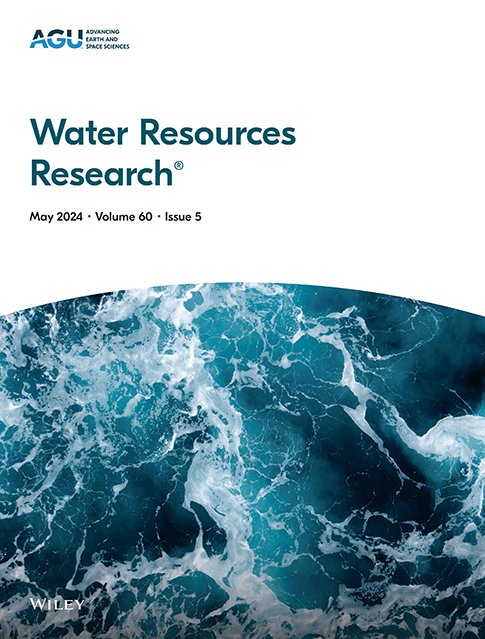Bidirectional Translations Between Observational and Topography-Based Hydrographic Data Sets: MERIT-Basins and the SWOT River Database (SWORD)
IF 4.6
1区 地球科学
Q2 ENVIRONMENTAL SCIENCES
引用次数: 0
Abstract
The recently launched Surface Water and Ocean Topography (SWOT) Mission is expected to provide transformative observations of water surface elevation, width, and slope and produce derived estimates of discharge for global rivers along rivers in the SWOT River Database (SWORD). However, the hydrographic representation of rivers in SWORD differs from hydrography data sets commonly used for modeling purposes, such as Multi-Error-Removed Improved Terrain (MERIT)-Basins. Here, we develop links between the river networks of SWORD and MERIT-Basins (MB) to enable interoperability between SWOT data products and hydrologic modeling frameworks. This data set, termed MERIT-SWORD, identifies a subset of ∼277,000 global MB river reaches that most closely represent the location and extent of the SWORD river network and establishes bidirectional, one-to-many translations between reaches in the two hydrographic data sets. The MERIT-SWORD data set serves to unite SWOT observations with river routing models, allowing for the seamless and standardized assimilation of SWOT vector products into global river simulations and the provision of improved a priori discharge estimates for SWOT discharge computation.基于观测和地形的水文数据集双向转换:merit -流域和SWOT河流数据库(SWORD)
最近启动的地表水和海洋地形(SWOT)任务预计将提供对水面高程、宽度和坡度的变革性观测,并在SWOT河流数据库(SWORD)中产生全球河流沿河流量的推导估计。然而,SWORD中河流的水文表示不同于通常用于建模目的的水文数据集,例如多误差去除改进地形(MERIT)-盆地。在这里,我们开发了SWORD和merit流域(MB)河网之间的联系,以实现SWOT数据产品和水文建模框架之间的互操作性。该数据集被称为“MERIT-SWORD”,它确定了全球约277,000个MB河段的子集,这些河段最能代表SWORD河网的位置和范围,并在两个水文数据集的河段之间建立了双向、一对多的转换。MERIT-SWORD数据集用于将SWOT观察结果与河流路径模型结合起来,允许将SWOT向量产品无缝和标准化地同化到全球河流模拟中,并为SWOT流量计算提供改进的先验流量估计。
本文章由计算机程序翻译,如有差异,请以英文原文为准。
求助全文
约1分钟内获得全文
求助全文
来源期刊

Water Resources Research
环境科学-湖沼学
CiteScore
8.80
自引率
13.00%
发文量
599
审稿时长
3.5 months
期刊介绍:
Water Resources Research (WRR) is an interdisciplinary journal that focuses on hydrology and water resources. It publishes original research in the natural and social sciences of water. It emphasizes the role of water in the Earth system, including physical, chemical, biological, and ecological processes in water resources research and management, including social, policy, and public health implications. It encompasses observational, experimental, theoretical, analytical, numerical, and data-driven approaches that advance the science of water and its management. Submissions are evaluated for their novelty, accuracy, significance, and broader implications of the findings.
 求助内容:
求助内容: 应助结果提醒方式:
应助结果提醒方式:


